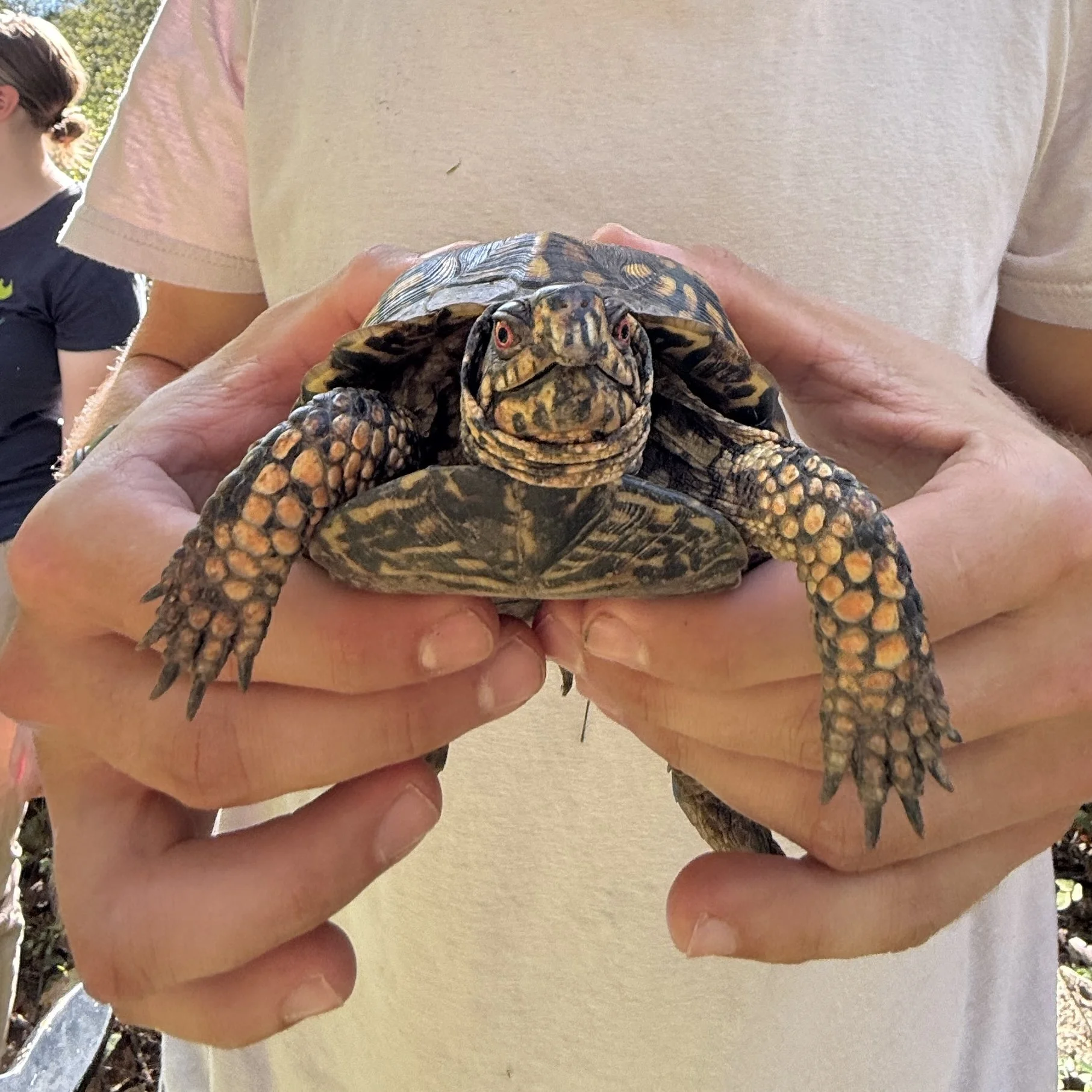Finding a needle in a haystack.
The theme for our sixth week at SMSC was “Surveying and monitoring species in the wild” and during this week we had plenty of opportunities to survey and monitor species in the field.
On a beautiful October afternoon we got the chance to learn about and practice radio telemetry. Radio telemetry is the process of using radio signals to track animal movement. Radio telemetry uses three primary tools to operate; a transmitter, antenna, and receiver.
The transmitter is a device attached to the animal that emits a radio signal on a specific frequency that the researchers use to track the animal. Transmitters come in many shapes and sizes some can be smaller than a fingernail and others can be as large as a brick. Transmitters ideally fall in the range of 3-5% of the animals weight.
The antenna is, in my opinion, the coolest part of radio telemetry. Antennas are designed to receive the radio waves in the air to and convert them to electric current for the receiver. Antenna come in many shapes and sizes but all are designed to achieve the same goal and are imperative for locating animals.
The receiver is used to tune the frequency that is being used and playback an audible noise that progressively gets louder as you approach the animal you are tracking. The receivers we used in our tracking assignment were used to playback the audible tracking sound, and allowed us to adjust the gain, giving us the ability to tune our tracking the closer we got to our subject.
Our subject for this assignment was Kenneth. Kenneth the Eastern Box Turtle (Terrapene carolina carolina) was equipped with a radio tracker and it was our time to locate him using radio telemetry. We were using a strategy called triangulation, where we take readings from separate points to determine the direction of the signal. We began along the fence line of SCBI in an area aptly named Kenneth’s Hollow. We picked up a signal far down the hill and began to head down towards the signal. Each time we picked up a signal, we recorded the GPS coordinates and the heading using a compass. After about three headings we began to narrow down Kenneths location. Unfortunately as we drew near, we realized Kenneth was in a bush, but not just any bush, a bush comprised of 99% thorns. After about 12 and half thorns entered by arms and back, a classmate exclaimed that they had seen Kenneth. Finally the hunt was over, and I could retreat to my room to bathe myself in Neosporin.
Radio telemetry currently has many uses and innovation in the field is growing. Remote tracking using GPS and satellite imagery is on the rise and research is currently being done at SCBI using satellites to track large mammals such as Rhinos, Giraffes, and Elephants in Africa. This is an area I see growing, especially with the rise of artificial intelligence being used to parse through large satellite data sets.
Kenneth, the Eastern Box Turtle (Terrapene carolina carolina) was extremely happy to see us. He was so excited he hid inside a ten foot tall bush of multiflora rose (Rosa multiflora)!

